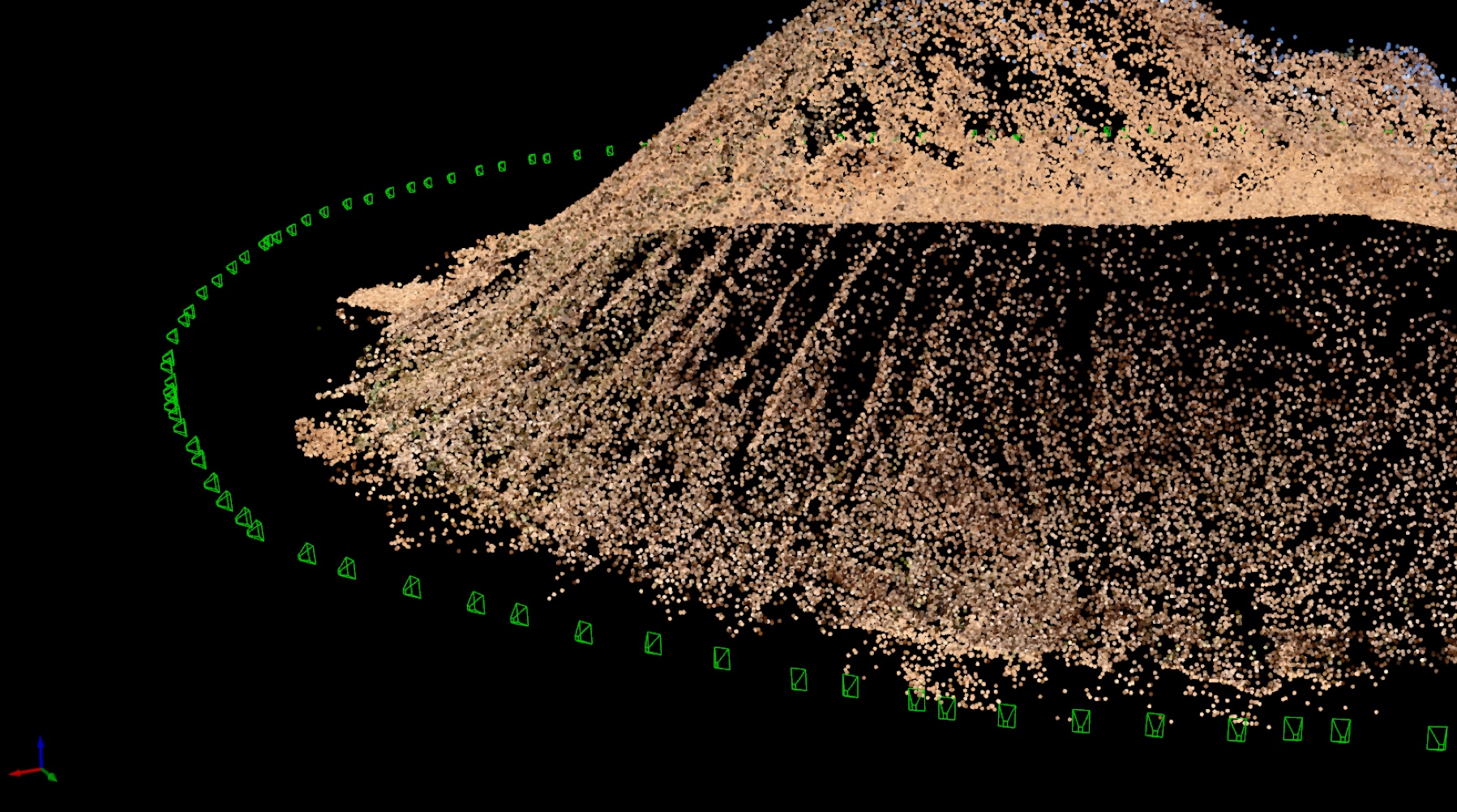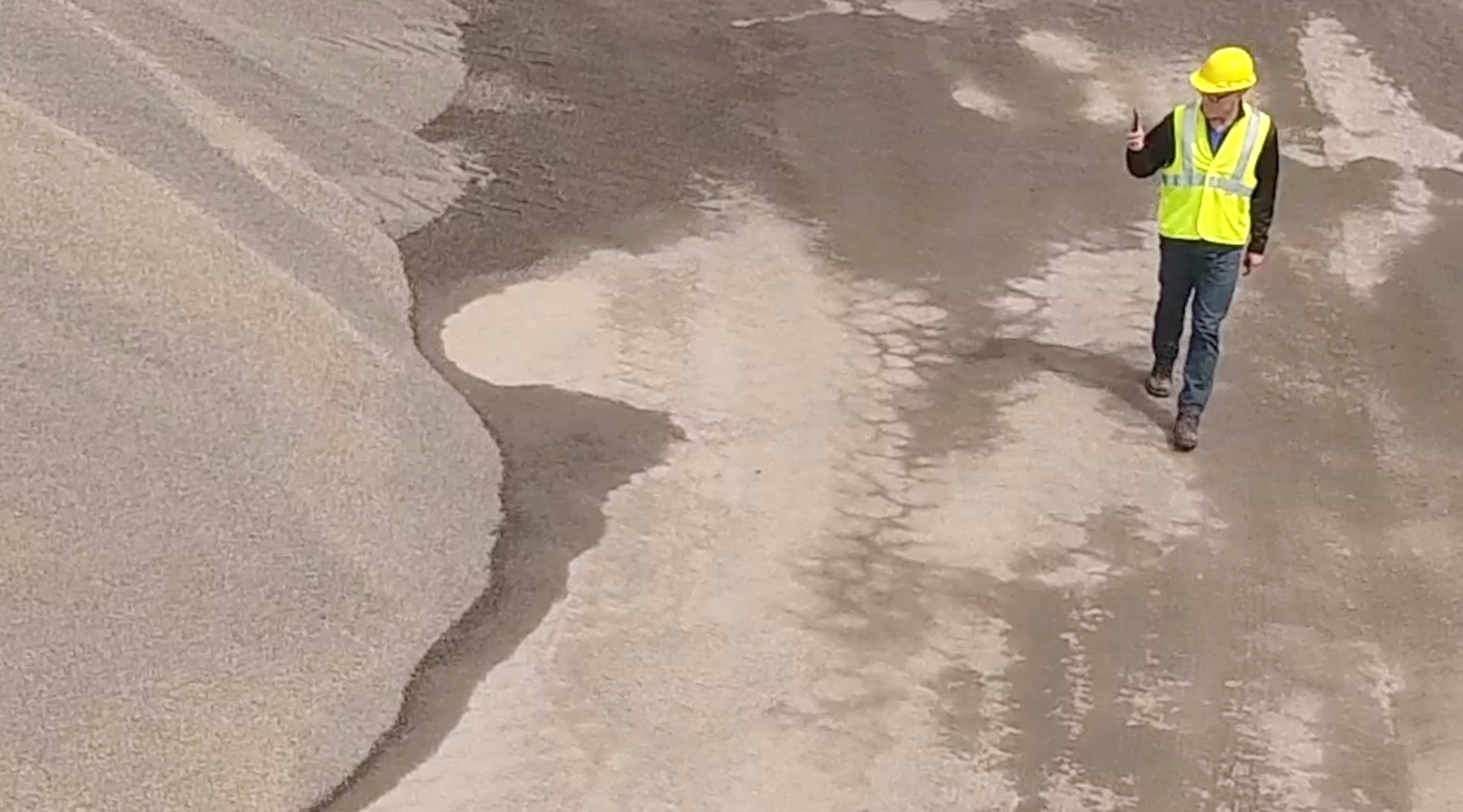Measuring stockpiles using image-based 3D reconstruction
 Measuring stockpiles of material has traditionally taken considerable time, money and effort. Accurate measurement reports are crucial to finance and accounting – and getting it wrong can mean money lost, unaccounted for, or written off. It can even lead to disputes and a long, costly road to resolution.
Measuring stockpiles of material has traditionally taken considerable time, money and effort. Accurate measurement reports are crucial to finance and accounting – and getting it wrong can mean money lost, unaccounted for, or written off. It can even lead to disputes and a long, costly road to resolution.
Traditional surveying and measurement teams, which can take time and cost significant amounts, use techniques such as drilling into stockpiles and LiDAR laser measurement equipment to gauge the volume of material. However, iPhone technology has delivered a solution for civil engineers, builders and the wider aggregate industry.
Any stockpile can now be quantified by using the Stockpile Reports Lite iPhone app. It allows professionals to measure piled material by simply pointing an iPhone at the material and walking around it. The measurement results are accessible right away, for a fraction of the typical cost and well before the time it would take a measurement crew.
The innovation was born out of the developers' (URC Ventures) work with the construction materials industry around the world since 2012, with their inventory management platform and patented measurement technology. URC Ventures solves large-scale industry challenges through the real time digitisation of the physical world.
The drastic improvements in mobile phone camera technology, combined with computer vision and machine learning, and the exponential growth in processing power, means it is now possible to make a simple, low-cost, easy to use solution available.
The enterprise inventory management version, Stockpile Reports, from which the Stockpile Reports Lite app has been developed, is image-based and uses 3D reconstruction to accurately measure stockpiles. It was an executive of an aggregates producer who gave them the idea to develop the Stockpile Reports technology, which is now used in 25 countries across the globe.
Before Stockpile Reports arrived, the standard practice in the aggregates industry was to call out a measurement team or surveyors once a year, twice a year, or even quarterly. This is costly and few sites can afford to have a team on hand or hire an outside firm frequently, so they have to estimate, often very inaccurately, and when they do get it measured there is a big difference.
[edit] How it works
After downloading the app, users simply point the iPhone camera at the surface of the pile and walk around its perimeter. The app captures high resolution imagery that is then uploaded to the cloud and processed to generate a report. Independent tests have shown the measurements to be within 1% to 2% of LiDAR (laser measurement) surveys. It only takes a couple of minutes to measure and your results are auto-generated quickly.
You can re-measure a pile as many times as you want as you won’t consume that measurement until you tap the ‘Accept Measurement’ button. When your measurement is uploaded and processed you will see that it is in a ‘Ready for Approval’ state. You can examine the 3D model, play back the video of your measurement, and decide whether or not to keep it. If you don’t like it, you are free to measure again. There is no additional charge. If you like what you see, you just tap the ‘Accept Measurement’ button and the final measurement volume will be revealed.
The benefits are numerous: fights over the amount of material bought, sold, produced, or delivered have been a long-standing battle in the industry. Resolving those disputes requires bringing in measurement crews, taking days, and often costing £1,000.
Companies who need to scale inventory management across their entire operation can upgrade to an enterprise version, giving unlimited user accounts, unlimited measurements, the ability to measure larger piles, bunkered material measurements, carry out aerial measurements via drone, and managing all the data and insights across all their locations.
[edit] Find out more
[edit] Related articles on Designing Buildings Wiki
Featured articles and news
RTPI leader to become new CIOB Chief Executive Officer
Dr Victoria Hills MRTPI, FICE to take over after Caroline Gumble’s departure.
Social and affordable housing, a long term plan for delivery
The “Delivering a Decade of Renewal for Social and Affordable Housing” strategy sets out future path.
A change to adoptive architecture
Effects of global weather warming on architectural detailing, material choice and human interaction.
The proposed publicly owned and backed subsidiary of Homes England, to facilitate new homes.
How big is the problem and what can we do to mitigate the effects?
Overheating guidance and tools for building designers
A number of cool guides to help with the heat.
The UK's Modern Industrial Strategy: A 10 year plan
Previous consultation criticism, current key elements and general support with some persisting reservations.
Building Safety Regulator reforms
New roles, new staff and a new fast track service pave the way for a single construction regulator.
Architectural Technologist CPDs and Communications
CIAT CPD… and how you can do it!
Cooling centres and cool spaces
Managing extreme heat in cities by directing the public to places for heat stress relief and water sources.
Winter gardens: A brief history and warm variations
Extending the season with glass in different forms and terms.
Restoring Great Yarmouth's Winter Gardens
Transforming one of the least sustainable constructions imaginable.
Construction Skills Mission Board launch sector drive
Newly formed government and industry collaboration set strategy for recruiting an additional 100,000 construction workers a year.
New Architects Code comes into effect in September 2025
ARB Architects Code of Conduct and Practice available with ongoing consultation regarding guidance.
Welsh Skills Body (Medr) launches ambitious plan
The new skills body brings together funding and regulation of tertiary education and research for the devolved nation.
Paul Gandy FCIOB announced as next CIOB President
Former Tilbury Douglas CEO takes helm.
UK Infrastructure: A 10 Year Strategy. In brief with reactions
With the National Infrastructure and Service Transformation Authority (NISTA).
























